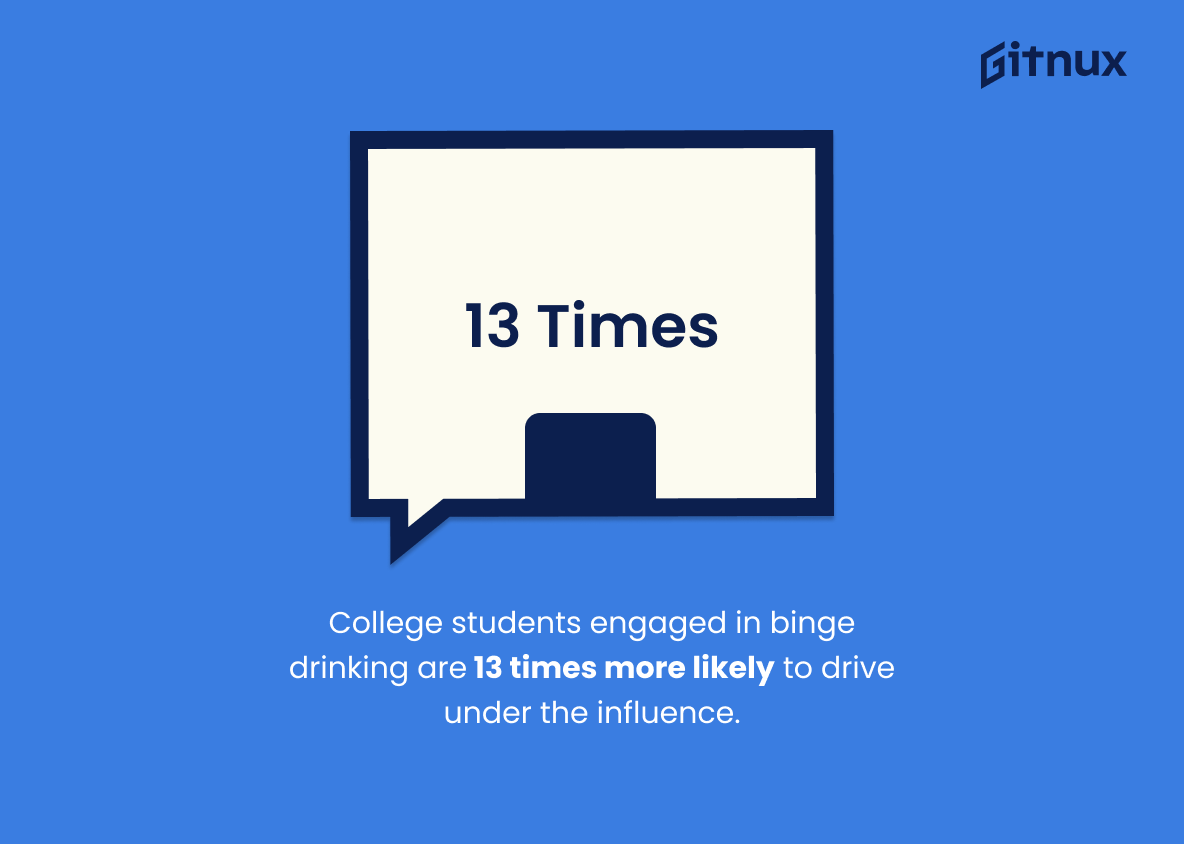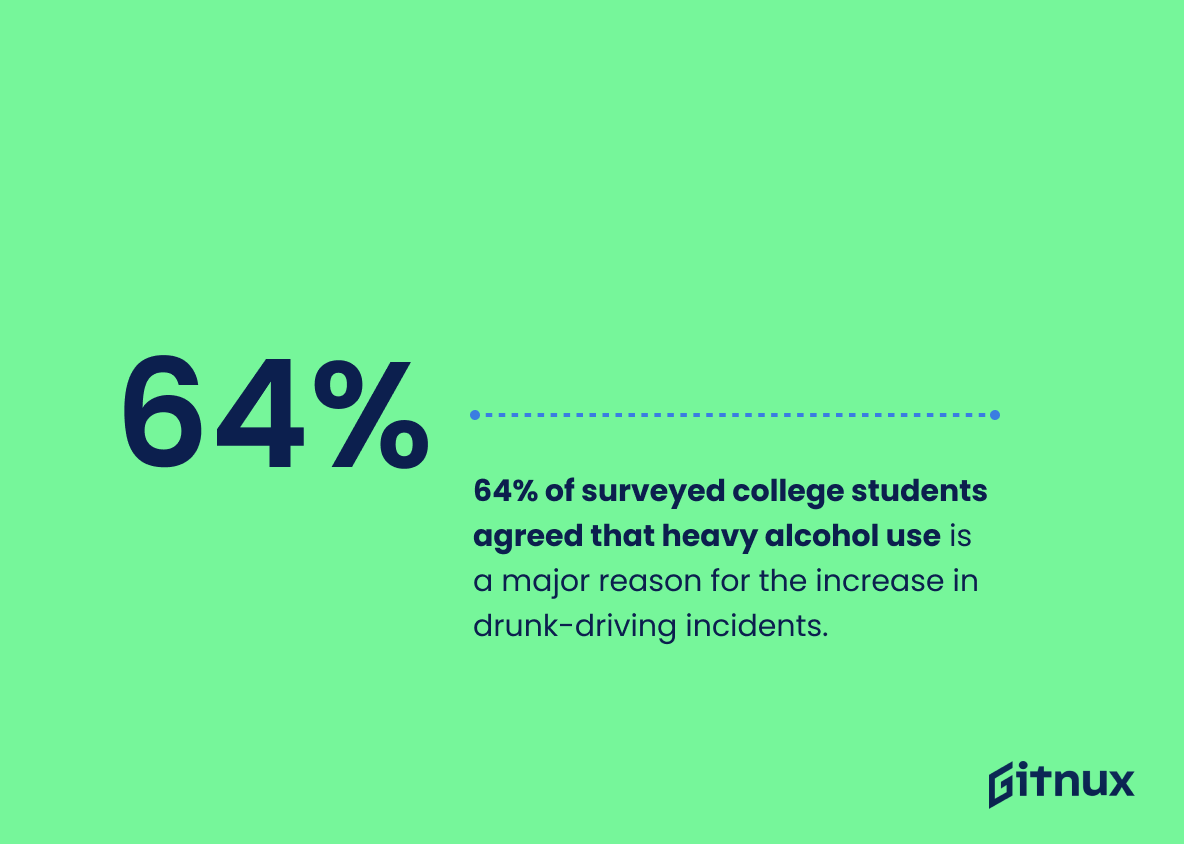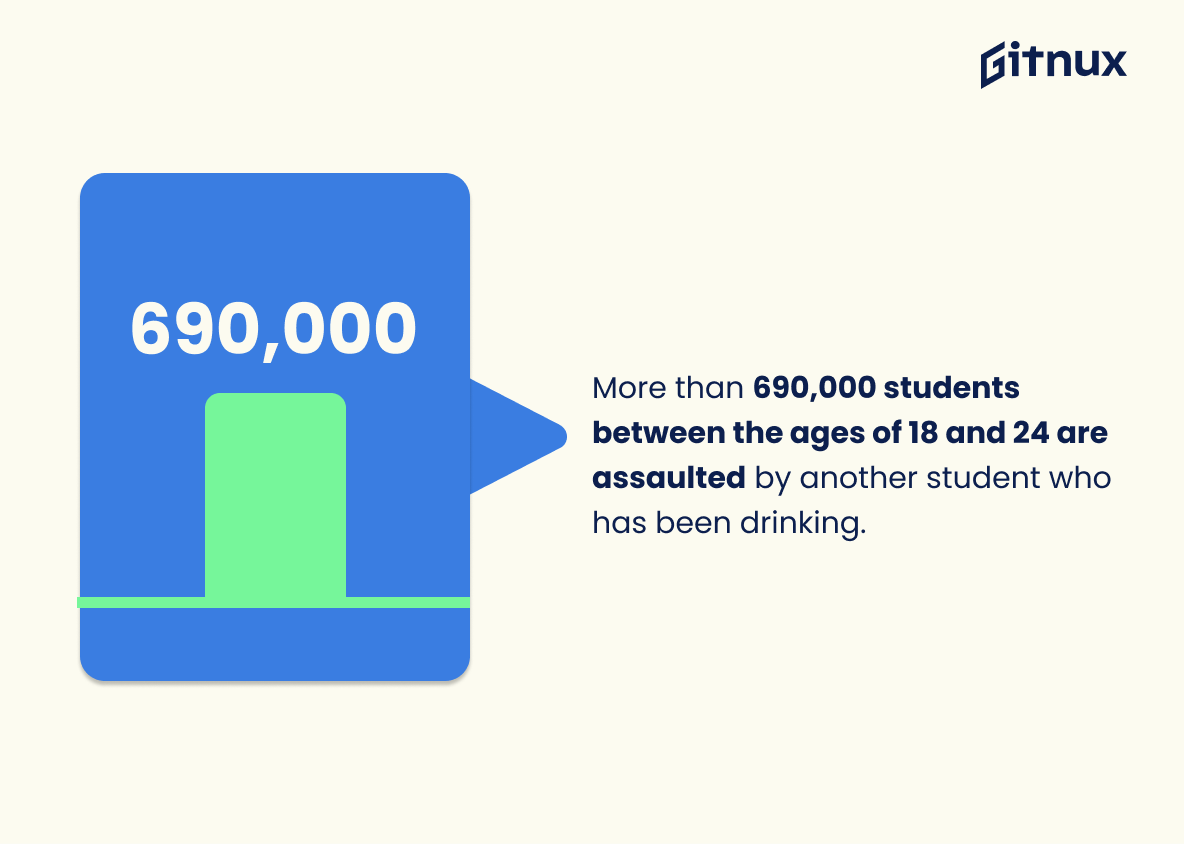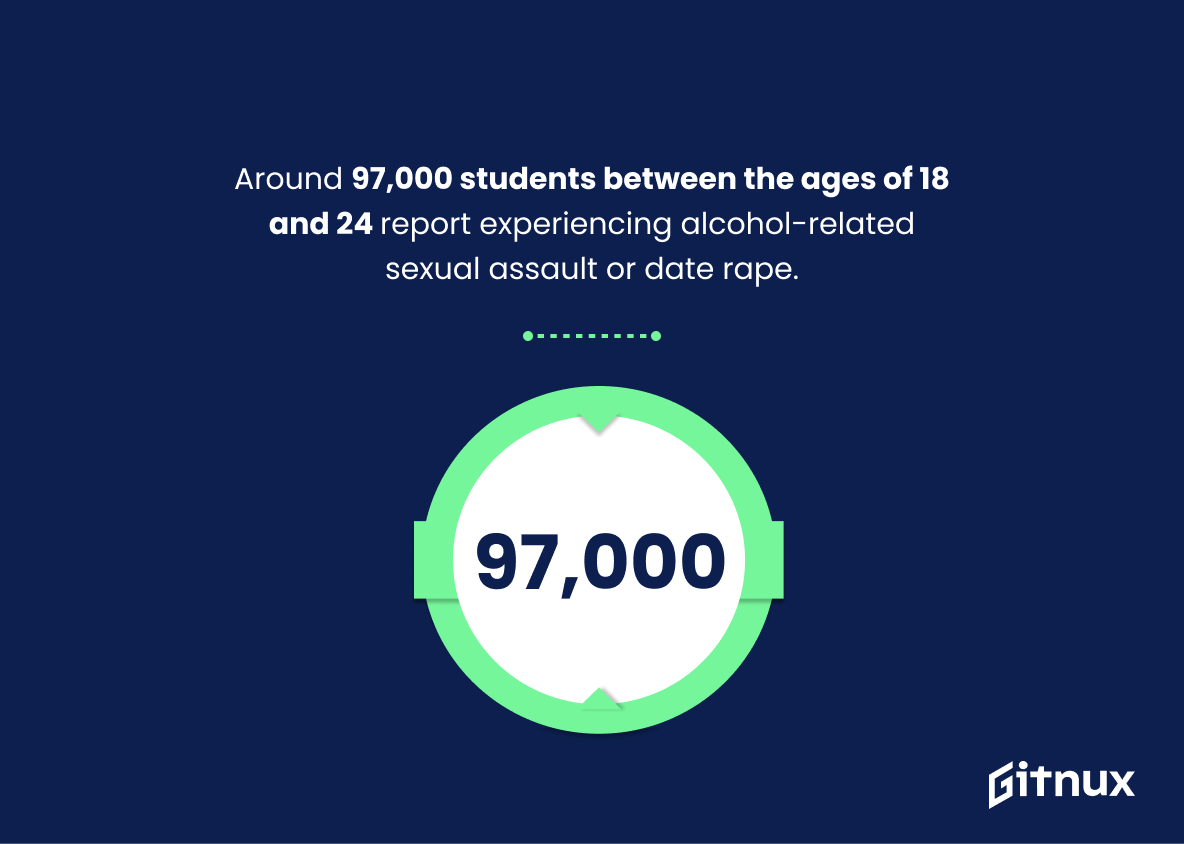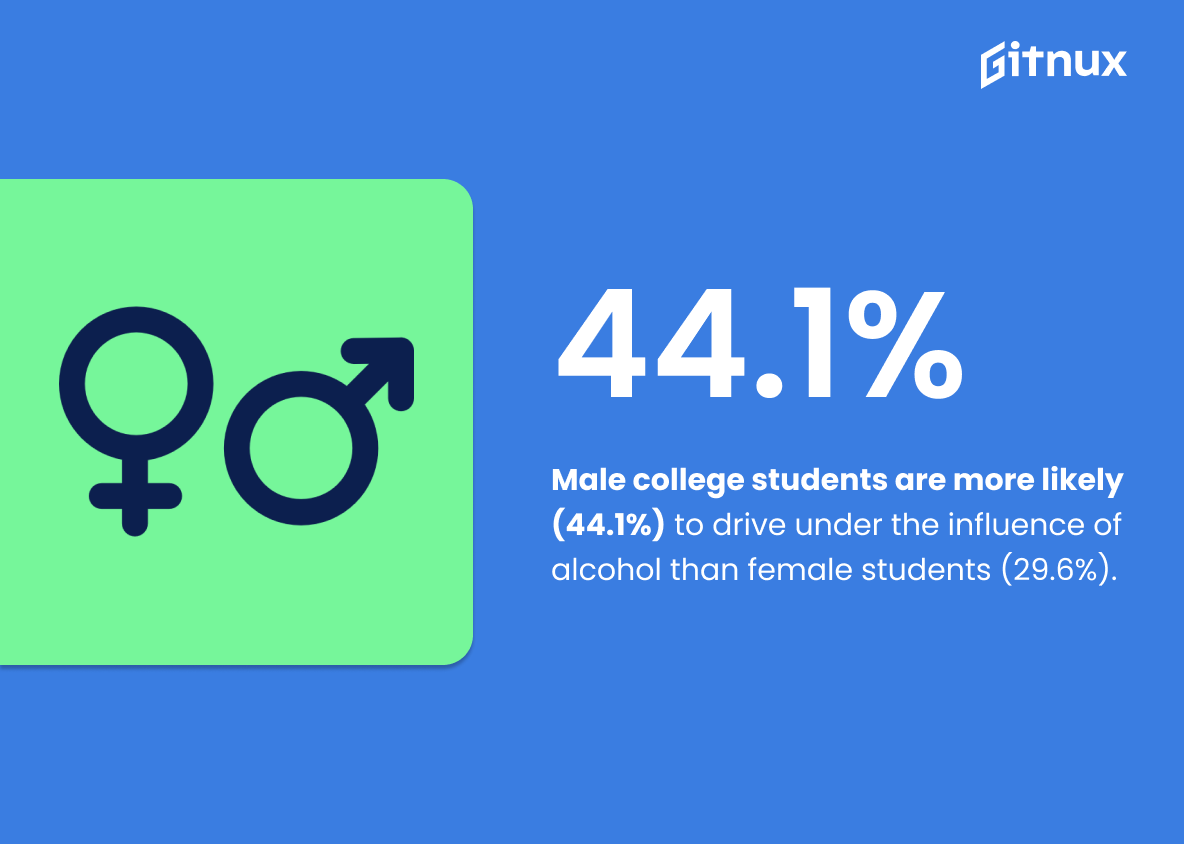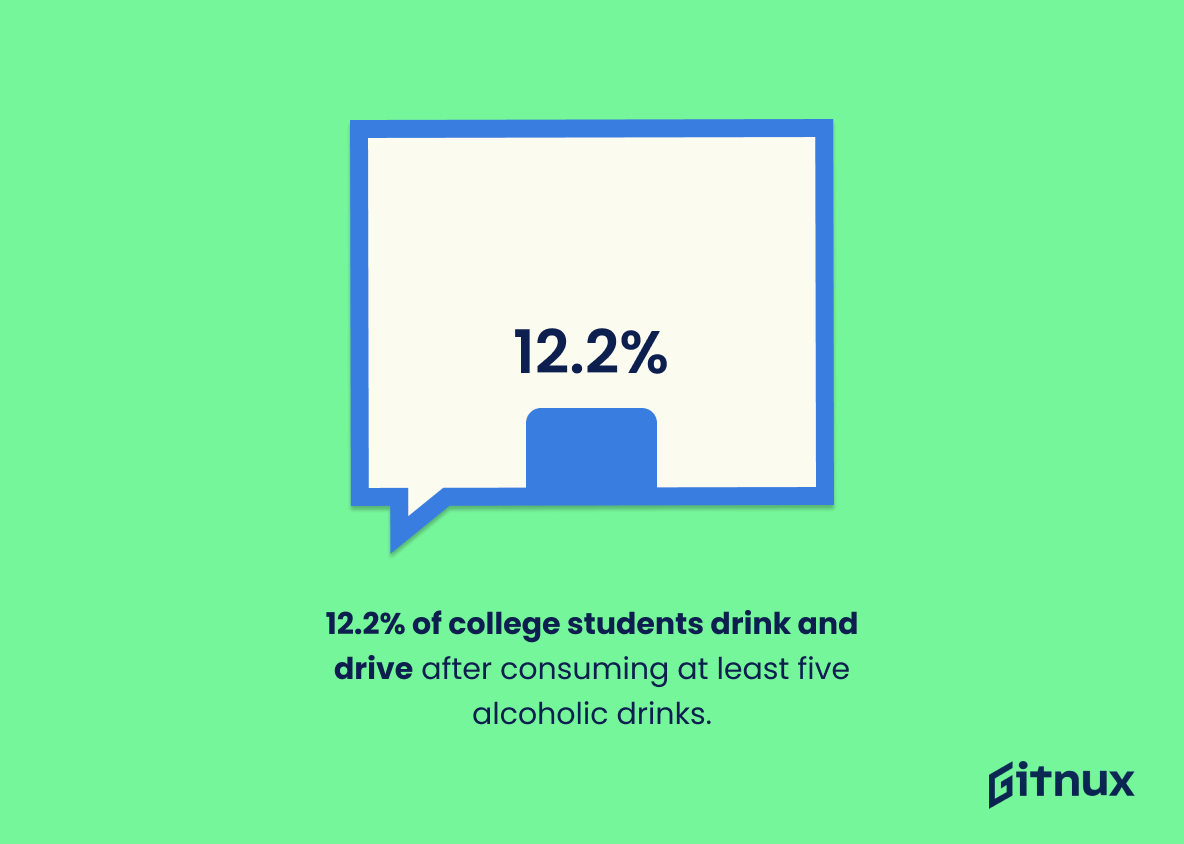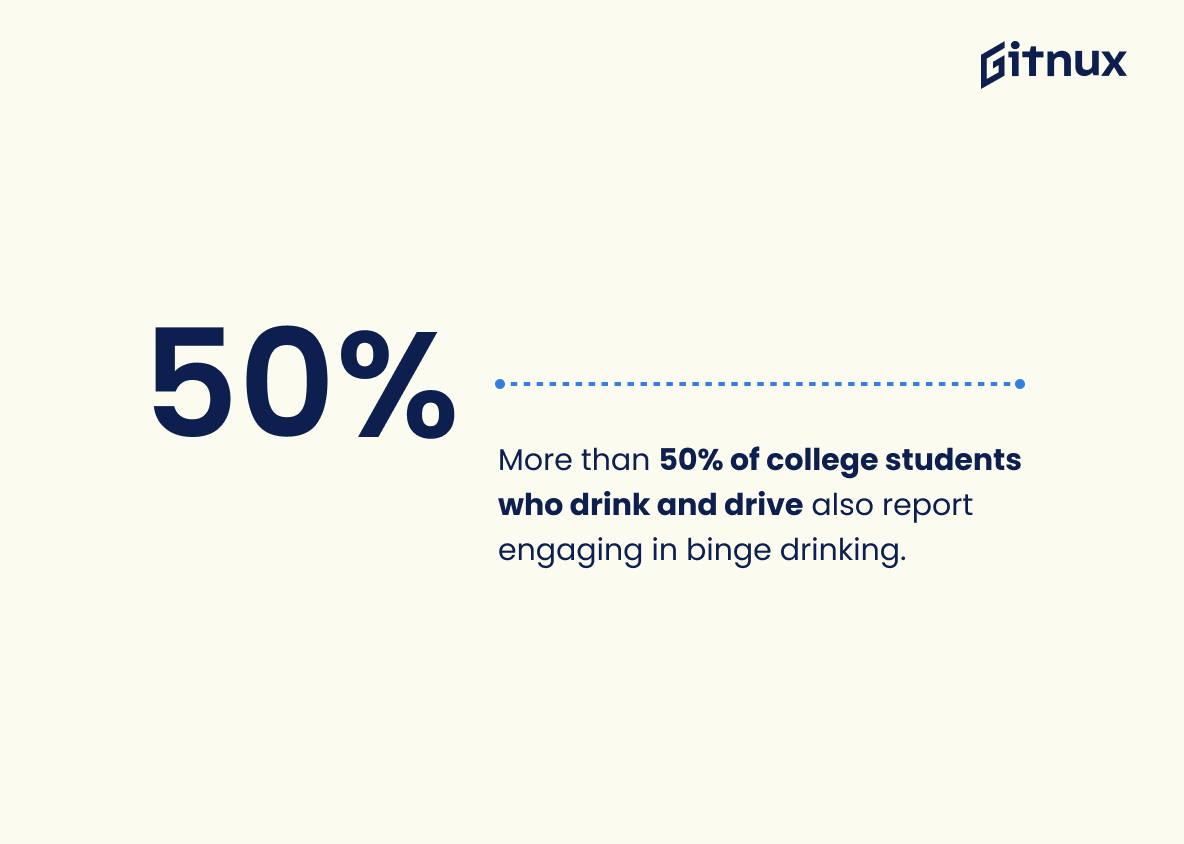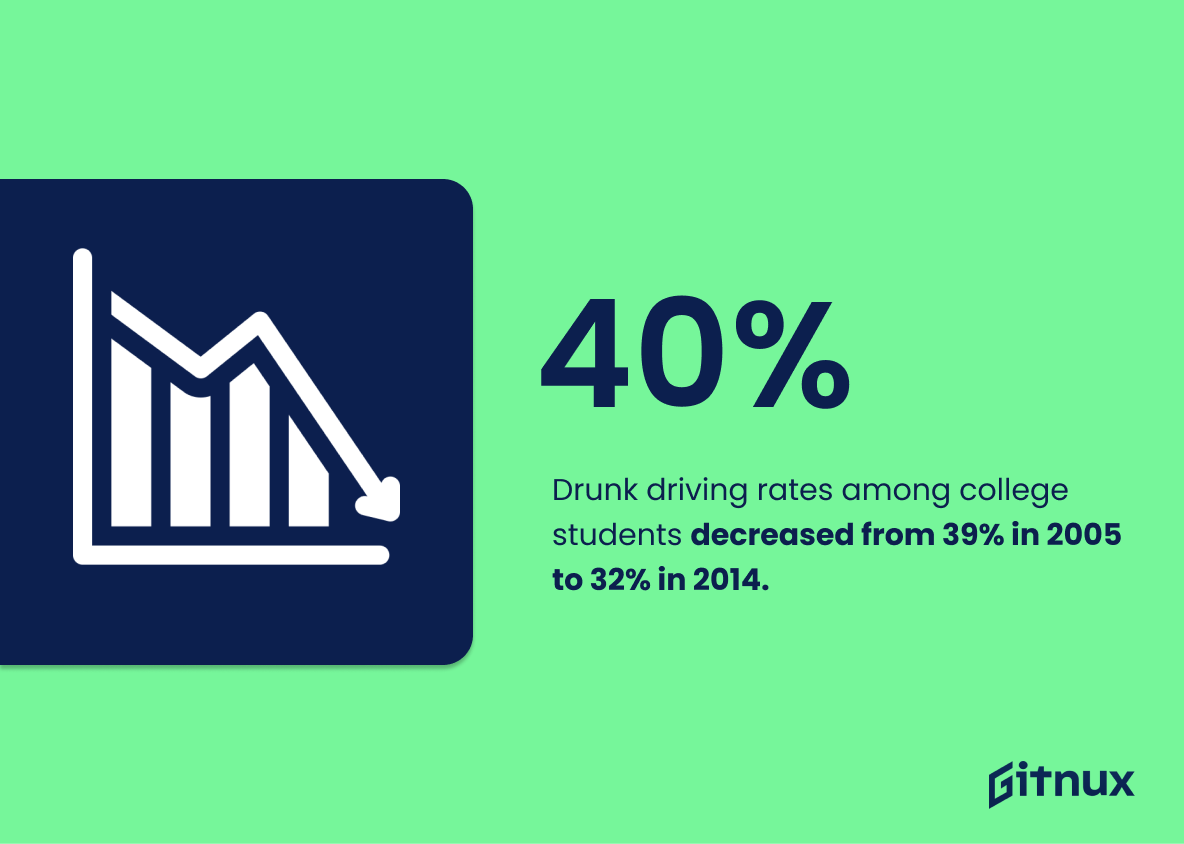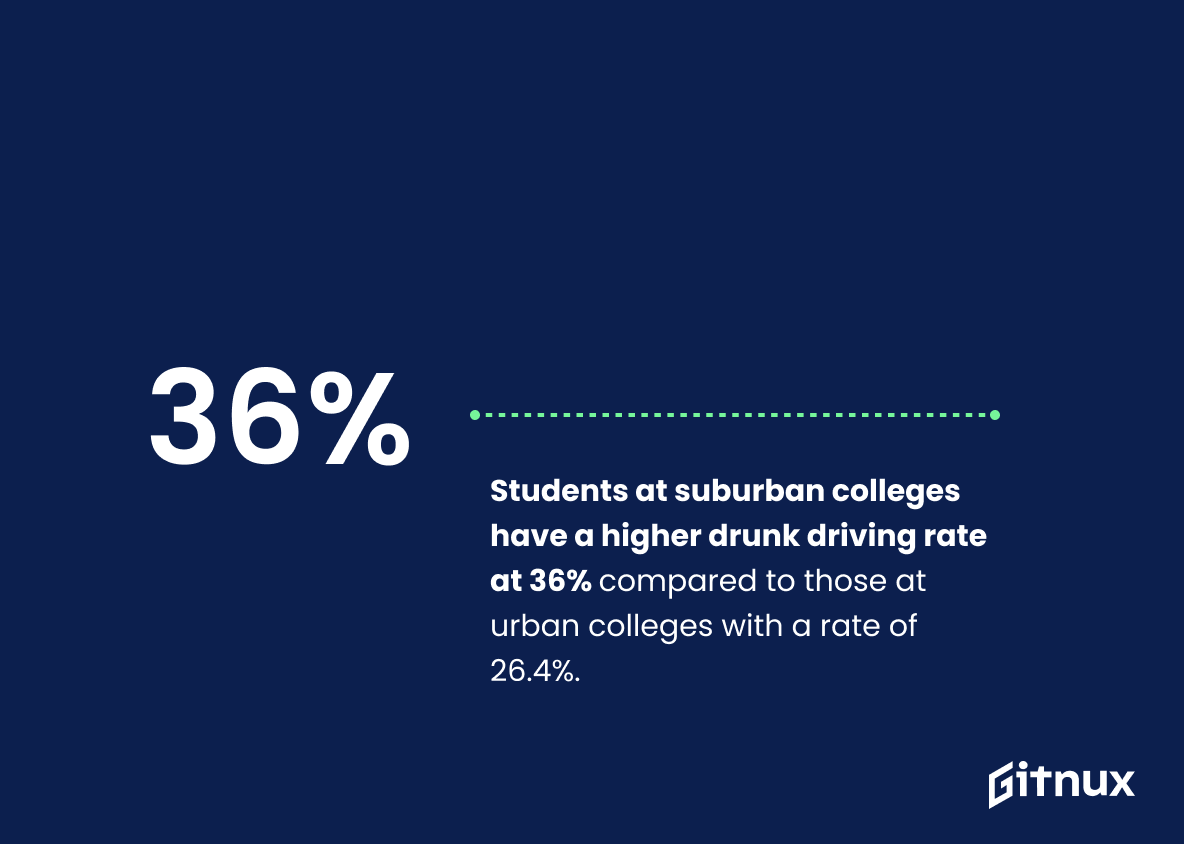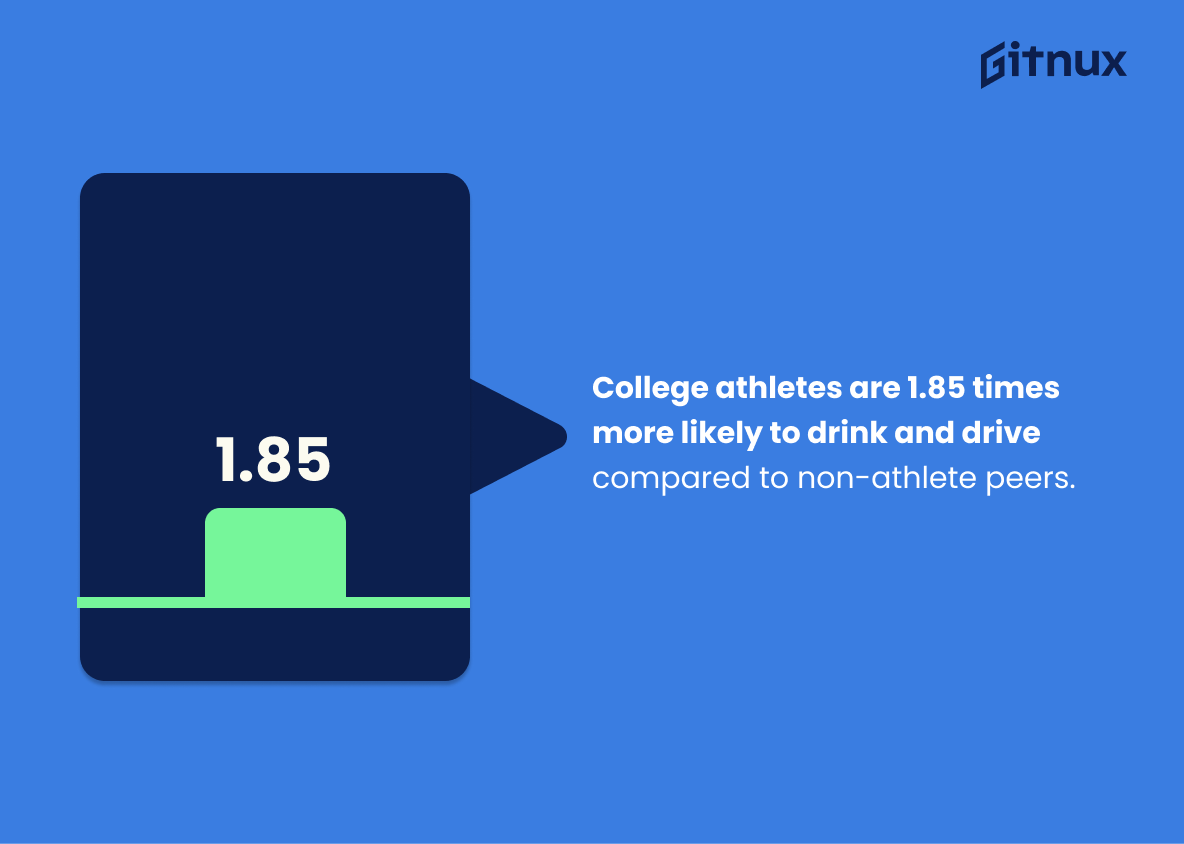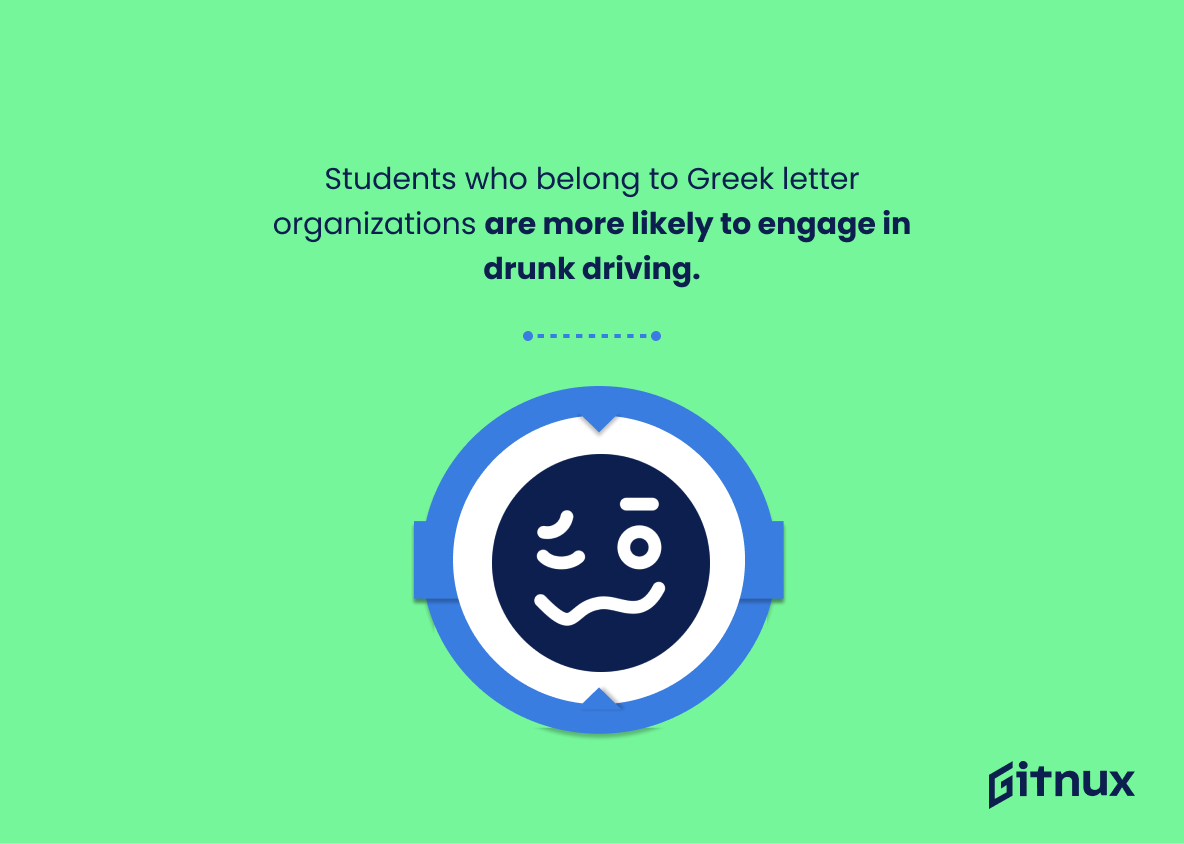Drinking and driving is a serious issue among college students, with tragic consequences. According to the National Institute on Alcohol Abuse and Alcoholism (NIAAA), approximately 1,825 college students die from alcohol-related unintentional injuries each year, including motor vehicle crashes. A survey conducted by the NIAAA also found that 33% of college students reported driving after drinking alcohol. In 2014 alone, an estimated 3.4 million college students drove under the influence of alcohol in the United States according to Project Know’s research findings.
Binge drinking has been linked to drunk driving as well; studies have shown that those who engage in binge drinking are 13 times more likely to drive under the influence than non-binge drinkers. Furthermore, 64% of surveyed US college student respondents agreed that heavy alcohol use was a major reason for increased incidents involving drunk drivers on roads across America today according to Statista’s data analysis report published in 2017 .
The dangers associated with this behavior extend beyond just car accidents; 690 thousand 18 – 24 year old American university or community/technical school attendees were assaulted by another student who had consumed alcoholic beverages while 97 thousand experienced sexual assault or date rape due directly related causes such as intoxication per NIH statistics released last month .
In addition male undergraduate learners are 44 percent more prone towards operating vehicles whilst intoxicated compared female counterparts at 29 point six percent based upon information gathered from NCBI reports issued back 2008 , 12 point two percent drink then drive having ingested five drinks minimum plus over half these individuals additionally practice binge consumption habits stated CDC figures presented during March 2018 edition MMWR publication , 20 % combine both liquor along marijuana when behind wheel revealed PMC article dated 2010 & 40 % blood ethanol concentration 0 08 higher declared Careers Psychology website June 2019 post .
Conversely there exists some positive news regarding situation ; rates amongst decreased 39 2005 32 2014 cited PMC paper 2009 & freshmen tend be riskier upperclassmen concluded NLM study July 2020 however suburban campuses 36 urban 26 4 percentage points greater likelihood engaging activity PubMed document 1998 finally recurrent offenders threefold chance repeat offense discovered Project Know investigation December 2016 yet 22 self identify safe driver Science Daily April 2008 release whereas athletes 85 multiple occasions normal peers 2700469 journal entry August 2007 Greek letter organizations 19833252 October 2009 article suggest even further increase probability involvement 69 recidivists figure provided same source mentioned earlier conclusion College Drinking Prevention site Journal Landing page
College Students Drinking And Driving Statistics Overview
Approximately 3.4 million college students drove under the influence of alcohol in 2014.
This statistic is a stark reminder of the dangers of college students drinking and driving. It highlights the prevalence of this issue and the need for greater awareness and education on the risks associated with it. It also serves as a call to action for college administrators, parents, and students alike to take steps to reduce the number of college students driving under the influence of alcohol.
College students engaged in binge drinking are 13 times more likely to drive under the influence.
This statistic is a stark reminder of the dangers of binge drinking among college students. It highlights the fact that those who engage in this behavior are far more likely to put themselves and others at risk by driving under the influence. This is an alarming statistic that should be taken seriously by college students and administrators alike.
64% of surveyed college students agreed that heavy alcohol use is a major reason for the increase in drunk-driving incidents.
This statistic is a powerful indicator of the correlation between heavy alcohol use and drunk-driving incidents. It shows that a majority of college students recognize the link between the two, and that they are aware of the dangers of drinking and driving. This statistic is an important reminder that college students should be mindful of their alcohol consumption and the potential consequences of driving under the influence.
More than 690,000 students between the ages of 18 and 24 are assaulted by another student who has been drinking.
This statistic is a stark reminder of the dangers of college students drinking and driving. It highlights the fact that not only can drinking and driving lead to serious injury or death, but it can also lead to physical violence against other students. This statistic serves as a warning to college students that drinking and driving can have serious consequences, not only for themselves but for those around them.
Around 97,000 students between the ages of 18 and 24 report experiencing alcohol-related sexual assault or date rape.
This statistic is a stark reminder of the dangers of alcohol consumption among college students. Not only does it put them at risk of driving under the influence, but it also puts them in a vulnerable position when it comes to sexual assault and date rape. This statistic serves as a reminder that college students should be aware of the risks associated with drinking and take steps to protect themselves.
Male college students are more likely (44.1%) to drive under the influence of alcohol than female students (29.6%).
This statistic is a stark reminder of the dangers of drinking and driving among college students. It highlights the fact that male college students are more likely to take the risk of driving under the influence of alcohol than female students, which could lead to serious consequences. This statistic is an important reminder that college students should be aware of the risks associated with drinking and driving and take steps to ensure their safety.
12.2% of college students drink and drive after consuming at least five alcoholic drinks.
This statistic is a stark reminder of the dangers of drinking and driving among college students. It highlights the fact that even after consuming five or more alcoholic drinks, a significant portion of college students are still willing to get behind the wheel. This alarming statistic serves as a warning to all college students to be mindful of the risks associated with drinking and driving.
More than 50% of college students who drink and drive also report engaging in binge drinking.
This statistic is a stark reminder of the dangers of binge drinking and driving. It highlights the fact that college students who drink and drive are more likely to be engaging in binge drinking, which can lead to impaired judgment and dangerous decisions behind the wheel. This statistic is a powerful reminder of the need for college students to be aware of the risks associated with drinking and driving, and to take steps to ensure their safety and the safety of others.
Approximately 20% of college students report driving under the influence of alcohol and marijuana.
This statistic is a stark reminder of the dangers of college students drinking and driving. It highlights the prevalence of this issue and the need for greater awareness and education on the risks associated with driving under the influence of alcohol and marijuana. It is a call to action for college students to take responsibility for their own safety and the safety of others on the road.
40% of college students who drink and drive have a 0.08% or higher blood alcohol content (BAC) level.
This statistic is a stark reminder of the dangers of drinking and driving among college students. It highlights the fact that a significant portion of college students who drink and drive have a BAC level that is above the legal limit, which can lead to serious consequences. This statistic serves as a warning to college students to be aware of the risks associated with drinking and driving and to make responsible decisions when it comes to alcohol consumption.
Drunk driving rates among college students decreased from 39% in 2005 to 32% in 2014.
This statistic is a testament to the progress that has been made in reducing the prevalence of drunk driving among college students. It shows that the efforts of organizations, schools, and individuals to raise awareness and promote responsible behavior have been successful. This is an encouraging sign that the trend of decreasing drunk driving rates among college students will continue in the future.
College freshmen are more likely to drink and drive than upperclassmen.
This statistic is a stark reminder of the dangers of drinking and driving among college students. It highlights the fact that freshmen are particularly vulnerable to the risks associated with this behavior, and that more needs to be done to educate and protect them. By understanding the prevalence of this issue among freshmen, we can better equip them with the knowledge and resources to make safer decisions.
Students attending colleges in suburban settings have higher rates of drunk driving (36%) compared to those in urban settings (26.4%).
This statistic is a stark reminder of the dangers of drunk driving among college students in suburban settings. It highlights the need for increased awareness and prevention efforts in these areas, as the rate of drunk driving is significantly higher than in urban settings. It also serves as a warning to college students in suburban settings to be extra vigilant when it comes to drinking and driving.
College athletes are 1.85 times more likely to drink and drive compared to non-athlete peers.
This statistic is a stark reminder of the dangers of drinking and driving among college athletes. It highlights the need for increased awareness and education on the risks of drinking and driving, as well as the importance of providing resources to college athletes to help them make responsible decisions.
Students who belong to Greek letter organizations are more likely to engage in drunk driving.
This statistic is a stark reminder of the dangers of excessive drinking among college students, particularly those who are members of Greek letter organizations. It highlights the need for greater awareness and education about the risks of drunk driving, and the importance of making responsible decisions when it comes to alcohol consumption.
College students with a history of drunk driving are 3 times more likely to drink and drive in the future.
This statistic is a stark reminder of the dangers of drinking and driving among college students. It highlights the fact that those who have already been caught driving under the influence are more likely to repeat the same mistake in the future, thus putting themselves and others at risk. This statistic is a powerful reminder of the importance of educating college students on the dangers of drinking and driving and the need for effective prevention strategies.
6.9% of college students who drink are recurrent drunk drivers.
This statistic is a stark reminder of the dangers of drinking and driving among college students. It highlights the fact that even a small percentage of college students who drink are putting themselves and others at risk by driving while intoxicated. This statistic is a call to action for college students to be more mindful of their drinking habits and to make sure they are not putting themselves or others in danger.
Conclusion
The statistics presented in this blog post demonstrate the alarming prevalence of college students drinking and driving. Approximately 1,825 college students die from alcohol-related unintentional injuries each year, including motor vehicle crashes. 33% of surveyed college students reported driving after drinking alcohol while 3.4 million drove under the influence in 2014 alone. Binge drinkers are 13 times more likely to drive drunk than those who do not binge drink and 64% agree that heavy alcohol use is a major reason for an increase in drunk-driving incidents. Furthermore, male college athletes are 1.85 times more likely to engage in such behavior compared to non-athlete peers and 6.9% of all student drinkers can be classified as recurrent drunk drivers with 22% viewing themselves as safe drivers despite their actions being otherwise illegal or dangerous on public roadsways . It is clear that there needs to be greater awareness about the dangers associated with drinking and driving among young adults so they can make informed decisions when it comes to getting behind the wheel after consuming alcoholic beverages – even if only one drink has been consumed – since doing so could have potentially fatal consequences for both themselfes and others sharing our roadways
References
0. – https://www.www.samhsa.gov
1. – https://www.www.collegedrinkingprevention.gov
2. – https://www.www.ncbi.nlm.nih.gov
3. – https://www.www.projectknow.com
4. – https://www.pubmed.ncbi.nlm.nih.gov
5. – https://www.niaaa.nih.gov
6. – https://www.www.cdc.gov
7. – https://www.www.statista.com
8. – https://www.careersinpsychology.org

